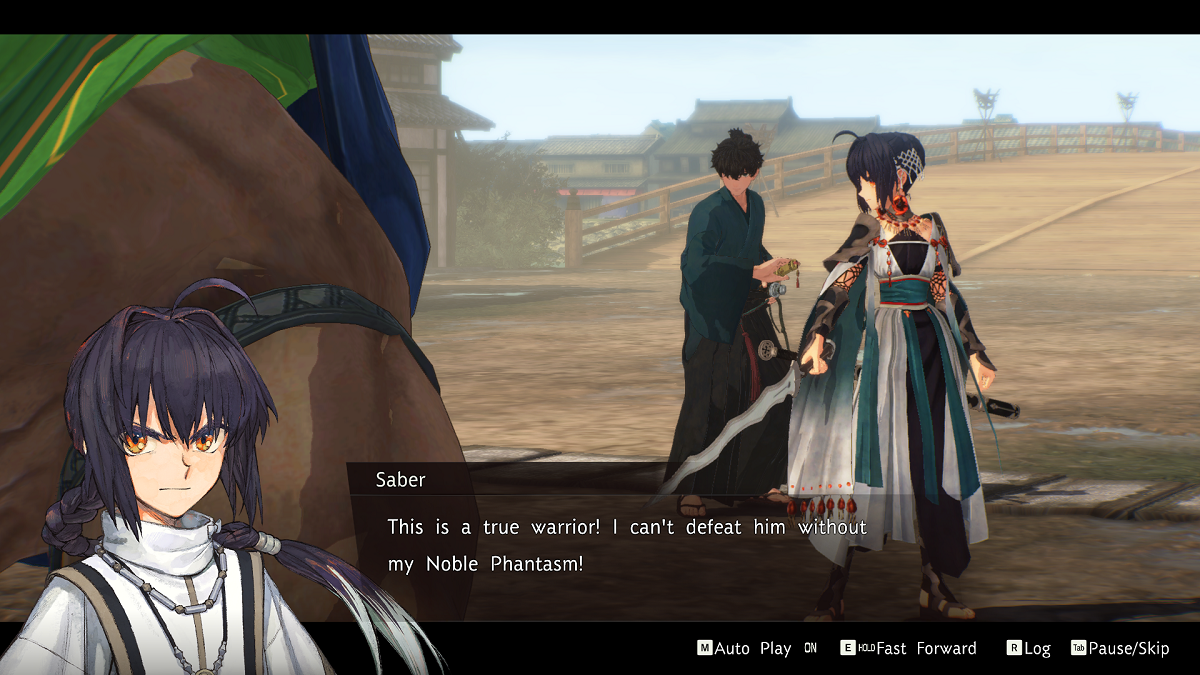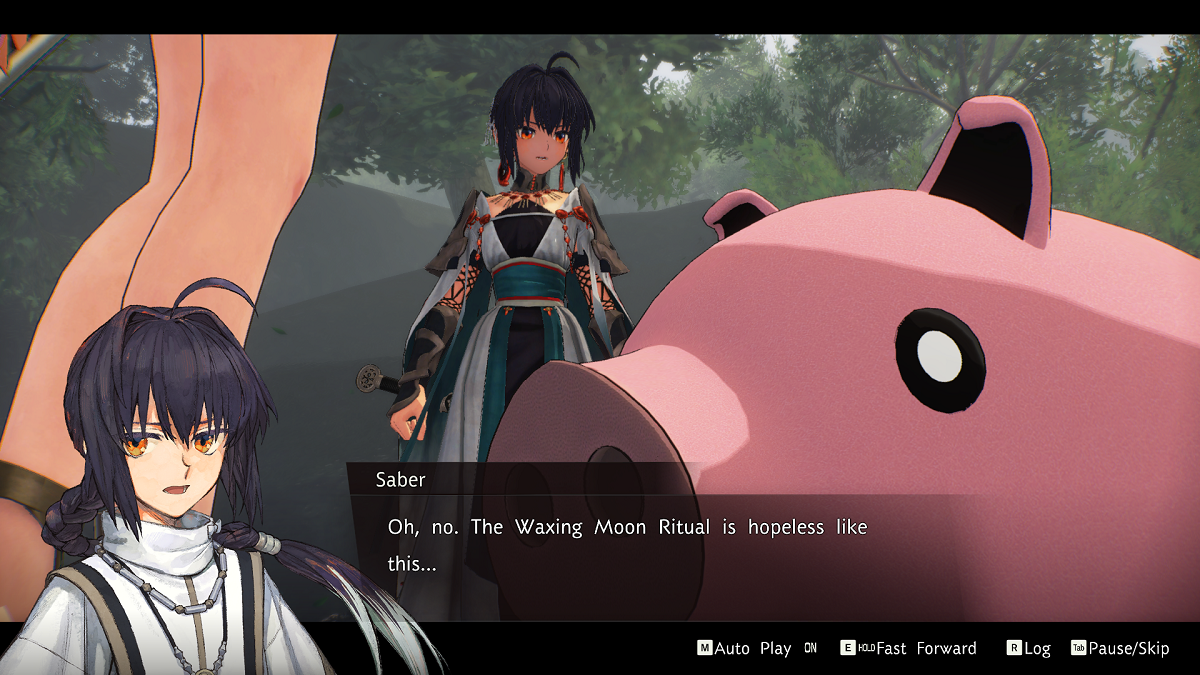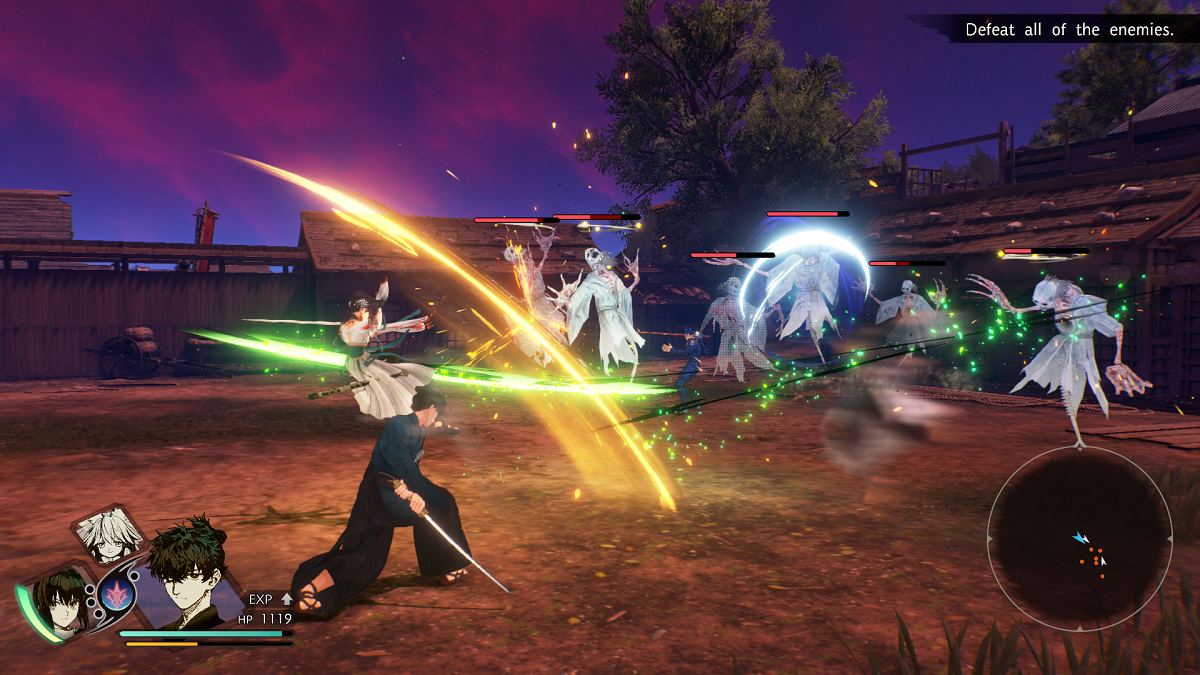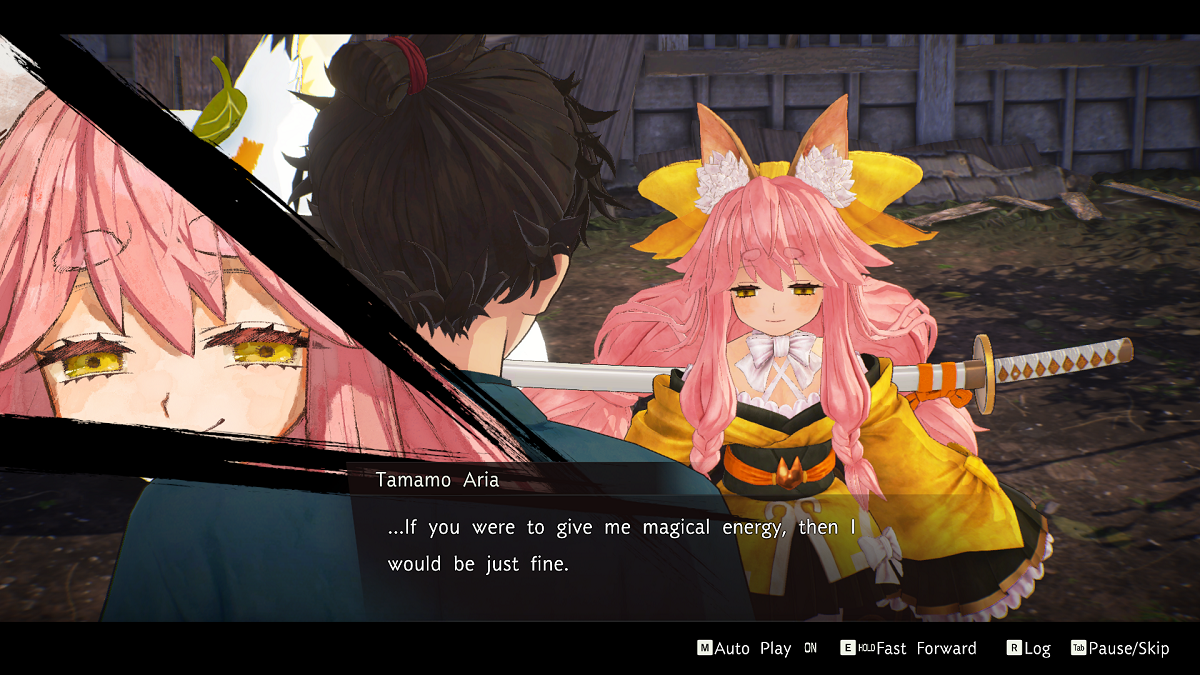As a Fate fan who desperately wants her friends to also get into the series, I am eternally frustrated at the Kingdom Hearts-like reputation it has. For people such as myself, Fate/Samurai Remnant is a savior. With a satisfying yet simple story, familiar setting, and a cast of both new and veteran characters, it serves as a fantastic gateway game while also standing on its own as a legitimate action game.

Fate/Samurai Remnant follows Miyamoto Iori, the adopted son and apprentice of Miyamoto Musashi. He finds himself wrapped up in the Waxing Moon Ritual—something similar to the Holy Grail War ritual from Fuyuki—in which seven Masters and their seven Servants duke it out in a battle royale for the Waxing Moon. The Waxing Moon can grant the winner any wish. Iori meets allies such as an alternate version of his master, Berserker, and Zheng Chenggong, who is a mage from China and the Master of Archer. However, as the Ritual progresses, things aren’t all that they seem. Between Rogue Servants, foreign mages, and hostile onmyoji, there’s more to the Waxing Moon Ritual than meets the eye.
Fate is one of those series where those with only a passing knowledge think it’s far more complicated than it actually is. The only reason it seems so is because fans of it have a tendency to explain everything about the different timelines and properties, rather than stick to a single one. Fate/Samurai Remnant is fairly simple in terms of its story. In fact, if you know anything about Japanese mythology and the time period it’s set in, there are a lot of twists that you can see coming. That’s not a bad thing, of course! It doesn’t bombard the player with lots of Nasuverse terminology, while still having enough shout-outs for veteran fans to giggle at. The usage of familiar faces for the Rogue Servants was a good middle ground for both factions. They don’t feel so intrusive that they take the spotlight away from the original characters.

In my preview for Fate/Samurai Remnant, I noted that Iori and Saber have a very similar relationship to Shirou and Saber from Fate/stay Night. Well, like Ryota Matsushita said in our interview for the game, I was completely off the mark the more I played. It was a nice change of pace, and both of them shine in their own way. It made me appreciate them for who they are, rather than as expies of those two. For better or for worse, Iori is a very inoffensive protagonist who is easy to like, but can be a tad boring. Imagine Shirou if Shirou was just a normal and sane guy. That’s basically Iori. Watching his and Saber’s relationship develop was really fun though.
However, my favorite part of Fate/Samurai Remnant was in its Digressions. These are side stories for the Rogue Servants or other Master-Servant pairs where you get to learn a bit more about them. Sometimes it’s a shame, though! What we see of Takao Dayu and Berserker, as well as Zheng Chenggong and Archer, kind of make me want an entire game just about those two pairs. Hopefully, we can see more of them in the future, either as DLC or as playable characters in Fate/Grand Order. I waited years and put over $300 into Fate/Grand Order for Charlemagne after Fate/Extella Link. I’m willing to do the same for Archer.

The story and the characters for Fate/Samurai Remnant are, in my opinion, the strongest points of the game. But even though I’m not the biggest fan of Koei Tecmo action games, I have to say that the team managed to create a really balanced battle system. It’s simple, because it mostly follows the Musou hack’n’slash formula. However, when you’re fighting against certain monsters and Servants, button mashing will make the game a lot harder than it is. It’s super rewarding to master timing your dodge to use Riposte, especially against certain Servants who have an incredibly fast and wide hit box. Though it’s not as flashy as you’d expect, the Afterglow mechanic was also lots of fun to explore, even if I only ever used a few stances and Afterglow effects in boss fights.
As a quick explanation, Iori can switch between multiple stances on the fly in battle. After spending enough time in a stance, Iori will shine with Afterglow, in which he will gain specific bonuses after switching to another stance. For example, Water Stance’s Afterglow increases his attack speed, which pairs perfectly well with slow but powerful stances like Earth Stance or Fire Stance. Switching stances based on what Afterglow you want and what enemies you’re dealing with can really help you gain an edge in battle. But the game is still perfectly winnable even if you don’t care about all of that. It’s the perfect mix of easy and challenging that makes Fate/Samurai Remnant an accessible action game on top of a good baby’s first Fate.

By setting the story in real life and in a time period that most players are familiar with, Fate/Samurai Remnant presents its fantastical plot in a grounded reality. It doesn’t bring anything new to the table in terms of gameplay or story. But when you’re making a musou game based on an IP with an established setting and lore, simplicity is the best answer. Even though I finished the game, I’m still looking forward to seeing Iori and the others in future DLC, and hopefully, in Grand Order.
Fate/Samurai Remnant is readily available on the PS4, PS5, Windows PC, and Nintendo Switch.
The battle over the Waxing Moon which could grant any and all wishes — the Waxing Moon Ritual. The seven individuals seeking their wish, or Masters, are the bearers of the Ritual. The seven Heroic Spirits, or Servants, are summoned to this world by their Masters. The curtain rises on the battle between the seven Masters with their seven Servants. Traverse the city of Edo and become victorious in the Waxing Moon Ritual. Fight, explore, converse... Many elements are deeply intertwined in this action RPG! PC version reviewed.
Fate/Samurai Remnant combines an accessible story for Fate beginners with a simple battle system that's rewarding to master.
- Back in the early days of Fate/stay Night, was Saber's identity really easy to guess? Fate/Samurai Remnant Saber's True Name was quite predictable.
- This game did a great job at altering my opinion of existing Fate characters. I wish only bad things on Arjuna now. His moveset is so tricky I never got the hang of timing my Ripostes.
- Because I idled a lot in the game, my play time does not accurately reflect how long it takes for one playthrough. It ended up taking me around 40 hours though.


Published: Sep 28, 2023 07:01 am